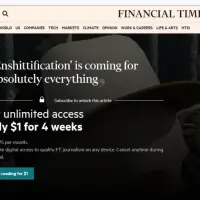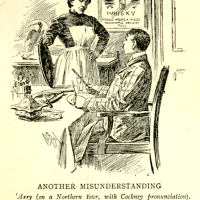 I’m pleased to announce that I will be presenting a paper this week at the 2019 International Conference on Religion & Film in Halifax, Nova Scotia. My talk title is “Unveiling Bird Box: Thinking about Genres of Apocalypse and Contemporary Culture.” I’ve included the abstract below.
I’m pleased to announce that I will be presenting a paper this week at the 2019 International Conference on Religion & Film in Halifax, Nova Scotia. My talk title is “Unveiling Bird Box: Thinking about Genres of Apocalypse and Contemporary Culture.” I’ve included the abstract below.
 I intend to have some fun with this presentation, and I am using Zombieland to set up the talk. There is a weird and probably accidental coincidence between the way the Bird Box film thinks about apocalypse and the way that ancient Jewish people wrote apocalypse. It might not be accidental, I suppose, and in terms of genre, apocalyptic film is the great-great-grandbaby of Jewish and Christian apocalypses (like Daniel, Revelation, The Apocalypse of Abraham, 2 Enoch, etc.). But there is a recovery in Bird Box of some peculiar ancient features, so that (in my mind) apocalyptic and postapocalyptic film is uniquely suited to recover that sense of what was going on when Jews started shaping this genre–even in a secular world.
I intend to have some fun with this presentation, and I am using Zombieland to set up the talk. There is a weird and probably accidental coincidence between the way the Bird Box film thinks about apocalypse and the way that ancient Jewish people wrote apocalypse. It might not be accidental, I suppose, and in terms of genre, apocalyptic film is the great-great-grandbaby of Jewish and Christian apocalypses (like Daniel, Revelation, The Apocalypse of Abraham, 2 Enoch, etc.). But there is a recovery in Bird Box of some peculiar ancient features, so that (in my mind) apocalyptic and postapocalyptic film is uniquely suited to recover that sense of what was going on when Jews started shaping this genre–even in a secular world.
I want to announce this not just to tell folks what I have been up to, but to invite local students to the conference. If you are a student living in Eastern Canada or New England, this is a unique opportunity. While there will be costs involved in going (unless you happen to live in Halifax), there are some great prices involved in this conference. It is FREE for undergraduate students, and only $30 for graduate students. That’s pretty cool, and shows a group of scholars intentional about raising up the next generation. You can register here.
I’m also looking forward to conversations about films that involve Mi’kmaq peoples, including Wi’Kupaltimk (Feast of Forgiveness), which I’ve linked below. Here is a brief description of the heart of the film, which is about food security issues for urban indigenous peoples:
The film [Wi’Kupaltimk] celebrates of the resilience of the Mi’kmaq, and Indigenous people in general; the rich landscape and resources which were available to them prior to colonization, the medicines and wild food that are still available and the sacredness of the food that sustains human beings spiritually, culturally, and physically.
If you are nearby, I would encourage you to join us! I’m presenting on Thursday morning.
Abstract: Unveiling Bird Box: Thinking about Genres of Apocalypse and Contemporary Culture
Bird Box has emerged as a pop culture phenomenon with ads warning the audience, “Don’t Look!” The supposal is basic: a global apocalyptic scenario of near elimination where the near survivors must veil themselves in order to survive. And yet, much of the speculative logic of the film is unknown. Despite widespread social media speculation, we do not know if the entity or entities that threaten human elimination are supernatural or natural. Despite the unknowns, and although the film presents itself as being about veiling, Bird Box is clearly about seeing. The tension of looking/not looking that film marketers captured in the ad campaign is not merely a challenge to the audience but is the essential diegetic crisis of the survivors.
While there are many unknowns about the speculative universe of the film, it is clear that it is an entirely post-religious world. And yet, to call the film “apocalyptic” is to recall the Jewish roots of the genre. Observation of themes of seeing in Bird Box reveals intriguing points of continuity and discontinuity with the religious roots of the genre, even in this post-religious film. In exploring definitions in John J. Collins’ The Apocalyptic Imagination and other scholars of Second Temple Jewish and Christian literature, and using examples in sacred texts like The Apocalypse of Abraham, this paper explores ways Bird Box invites us to think about apocalyptic films as revelations for contemporary culture.
Schedule
Thursday, June 13th 2019
9:00 a.m. – 10:30 a.m. Morning Sessions One
Sobey 260
Amir Hussain, Keeping it Reel: Muslims Changing Images of Muslims in Film and Television
Rubina Ramji, Following the Route of The Muslim Djinn – From Arab Folklore to American Theatres
Serife Goktas, Discovering The Truth With Cinema
Sobey 265
Natasha Wright, The Devil Wears Prada and so does the Witch: Female Bodies as ‘Evil’ in Horror
Jason WM Ellsworth, Jurassic Constructions: What Dinosaurs in Film Can Teach Us About Religion
Brenton Dickieson, Unveiling Bird Box: Thinking about Genres of Apocalypse and Contemporary Culture
11:00 a.m. – 12:30 p.m. Morning Sessions Two
Sobey 260
Philip Deslippe, Yogis and Swamis in Early American Film
Harshita Yalamarty, “Wear the Turban, Pray to God, Beat up Bad Guys”: Religion, Masculinity and Superheroes in ‘Super Singh’
Sailaja Krishnamurti & Saira Chibber, Hindu normativity and South Asian American masculinities in diasporic cinema
Sobey 265
Adam Stewart, Framing Masculinity in Evangelical Film
Diana Abernethy, Worthy of Love: The Omission of Biblical Quotations in Disney’s A Wrinkle in Time
Zachary Ingle, A Heady Brew of Christian Science, Salvation Army, and the Social Gospel
2:30 p.m. – 4:00 p.m. Afternoon Sessions
Sobey 260
Thomas Curran, Religion and Verisimilitude in Film
Johan Roeland & Miranda van Holland, “A more plausible Jesus”: the many faces of authenticity in the Jesus Christ Superstar phenomenon
Andrew Quicke, Christian Box Office: Why did Fox Fail, Sony Succeed?
Sobey 265
John Lyden, Sacred Death: Legitimizing Sacrifice in American War Films
Dan Brockway, A God of Violence and Nonviolence?: Imagining Hacksaw Ridge and The Birth of a Nation (2016) in a Shared Cinematic Universe
Kelly MacPhail, “Got to hate fences”: Authority and Spiritual Anarchy in Lonely are the Brave (1962)
Friday, June 14th
9:00 a.m. – 10:30 a.m. Morning Sessions One
Sobey 260
Monisa Qadri, Locating the muslim woman’s identity in Shyam Bengal’s Cinema
Zainub Beg, Jodha Akbar: A Case of Interfaith marriage, Bollywood, and ‘Otherness’
Nadira Khatun, Constructing a New Identity of Bengali Muslims in Zulfiqar, Rajkahini, and Kabir
Sobey 265
Jeanette Reedy Solano, No Promised Land: Immigrant Realities in Independent Film
Darrell Varga, Indigenous Resistance and Popular Cinema: Rhymes for Young Ghouls and Maliglutit
Rebecca Makas, “Knowledge Belongs to All. You Do Not Understand That—You Are Just a White Man”
11:00 a.m. – 12:30 p.m. Morning Sessions Two
Sobey 260
Lina Verchery, Temporal Density: Buddhist Perspectives on Temporality and Film
James H. Thrall, Song of the Other: Kon Ichikawa’s Biruma no Tategoto (The Burmese Harp)
Sobey 265
Michele Byers, After post-Jewish: Memory, Mediation, and American Identity on The Marvelous Mrs. Maisel
Chris Miller, What is Going on in Room 104?: Mormons and Shifting Mainstream Perceptions
Syed Adnan Hussain, Posthuman Creation in the Films of Alex Garland
Wi’kupaltimk Film
Wi’kupaltimk – Feast of Forgiveness from Kent Martin on Vimeo.
























Best wishes for it!
Never heard of Bird Box, before this (!) – but the ‘not looking’ reminds me of some computer games I’ve encountered: I wonder if there is a fairly recent (or recently-revived/-prominent) topos involved, here? The (ahem) visuals of posters and still photo you include, immediately made me think of the appearances of the monks and their boy in John Huston’s The Man Who Would be King (relevantly or not – something else time must tell) – while the still-mysterious story-matter also made me think of Aunt Beast in A Wrinkle in Time (whose treatment in the first film I somehow cannot remember, and in the (by me unseen) second film, I don’t remember hearing or reading anything – !).
I am reading this at a pretty high level, but I think it is a pretty standard horror trope. Not just “don’t look,” but the audience is supposed to experience the story with the people in the story. We are supposed to feel the pain, fear, hope, terror, etc. So the posters/teasers are often “you’ll wet your pants” or even “you’ll die” variety!
I realized I was thinking of a couple games (and also something in Dr. Who) where one has to look as constantly as possible the whole time at someone or something, not even blinking, to avoid being attacked, with every blink allowing the nearer approach of the danger – quite the opposite of ‘Don’t Look’! – but discussing this with a gamer, I learned of a game where a planet’s ‘sun’ was so dangerous that not only must one protect one’s eyes but as far as possible stay out of the light altogether, advancing from shadow to shadow as quickly as possible… Presumably the latter is not an element of Bird Box, as the photos show them with exposed faces and hands…
Nice, yes. We had to do that gave in Hockey. Hard to stop on ice skates in a blink.
The “supposal” for the book behind this film was actually this: “I heard once that if your mind could finally imagine eternity, it would break–make you mad.” From that we got the creatures in the film & book.
Thanks – wow, I’d never heard of that as a part of Hockey training (and my skating would take I know not how much improvement to attempt anything so subtle; staying standing is about my level…).
And I’m so un-caught-up, Bird Box-wise, I had not realized there was a novel (!). Nor have I caught up with more than the hand-out of your 13 June post… But I did just encounter, and get drawn into reading, this – which seems good matter for further discussion (also in the Tolkien film content/detail discussion) – though I’m not sure I know more than two of the films discussed (the original Ghostbusters, which I finally saw a couple years ago, and one with Captain America… while wondering which, if any, Godzilla films I may have seen in my science-fiction-near-omnivorous youth):
http://www.ncregister.com/daily-news/the-secular-apocalypse-irreligion-pop-culture-and-the-end-of-the-world
Pingback: “Unveiling Bird Box” ICRF Conference Talk Resources | A Pilgrim in Narnia